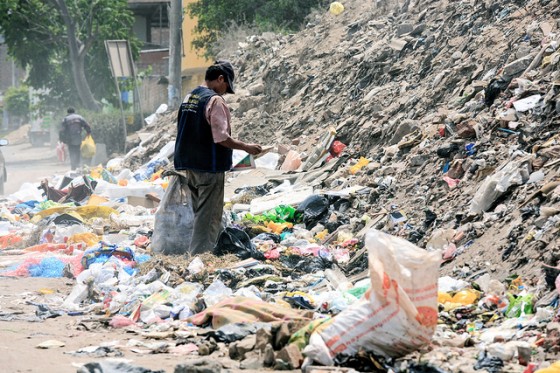
5 Tips to Reduce Your Water Footprint
 In energy conservation, we always hear about ways to lower our carbon footprint. Don’t get me wrong, reducing our carbon footprint is essential in making efforts to preserve this fragile environment, but we should also mention our water footprint just as much. The average American household wastes roughly 159 gallons per day, whereas across the world, many people make due with 25 gallons or less per day. I am not suggesting going to extremes (such as not bathing), but I definitely believe we all need to be more conscious of water usage.
In energy conservation, we always hear about ways to lower our carbon footprint. Don’t get me wrong, reducing our carbon footprint is essential in making efforts to preserve this fragile environment, but we should also mention our water footprint just as much. The average American household wastes roughly 159 gallons per day, whereas across the world, many people make due with 25 gallons or less per day. I am not suggesting going to extremes (such as not bathing), but I definitely believe we all need to be more conscious of water usage.
In hopes of giving practical water conservation advice, I have 5 tips that any average household (or individual) can use to GREATLY reduce their water footprint.
1. Flush Less
Toilet use accounts for the largest amount of indoor water usage (over 25%). According to the EPA, the average American uses around 9,000 gallons of water to flush waste, which is a HUGE waste of water. Since most homes made since the early 90s have begun to use low flush toilets, water waste has decreased but there are still ways to lower the amount further.
• DO NOT use your toilet as a trash receptacle (ex. cigarettes, bugs, paper towels)
• Place a 1/2 gallon jug (filled with gravel or sand) in the tank to cut down water used per flush
• If buying a new toilet, ensure it is a “low flush” model
2. Lower your Water Pressure
Lowering the water pressure in your home may not seem like a significant conservation method, but it is highly effective. By using pressure reducing valves for your home’s water supply you can help prevent leaking water pipes, water heaters, and leaky faucets. Technically speaking, if your water pressure is cut from the average 100psi to 50psi, you can experience up to a one-third reduction in usage. In some homes you may not be able to change out the valves, but you should still attempt to lower the water pressure when it is possible.
3. Seal Your Leaks
Leaky faucets are a pain, plain and simple. A leaking faucet/water outlet can cause significant damage to your home, and more importantly it causes unnecessary water waste. You should constantly be checking various water outlets in your home for leaks (showers, dishwashers, washing machines, etc.) because these small cases can cause huge water waste (avg. 10,000 gallons/yr.).
4. Use Low-Flow Showers
Those long, hot, relaxing showers you take every morning are one of the biggest wastes of water in your household. Roughly 20% of indoor water use is attributed to the shower, therefore to conserve water you should opt to use low-flow showerheads and decrease your showering time. The standard shower head flows at roughly 4.5 gallons/min. compared to the low-flow option of 2.5 gallons/min. Changing your showerheads is fairly inexpensive ($5-$20) and can save up to 3,000 gallons per year. If you pair that with shorter shower length, water saving will increase even more!
5. Wash Efficiently
An additional way to help conserve water is by using efficient washing methods. It helps if your home is equipped with on demand hot water rather than a large water heater. Having a tankless water heater will cut down standby water waste when using your washing machine or dishwasher. Also, when washing clothes, make sure to use the correct setting for the amount of clothes you are washing (i.e. if your laundry load is small, use the small setting).
Water conservation is a big deal in helping preserve our environment. Whether you opt to take shorter showers, or just fix a leak in your home, these small steps will help us move towards higher water conservation.
This guest post was written by Chelsea Edwards. Chelsea is a DIY specialist who works as a staff writer for diymother.org. You can follow her updates on Twitter (@DIYmother). Image Credit: liveearth.org



Post a comment